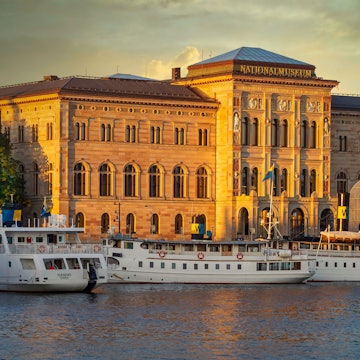
Everything you need to eat and drink in Scandinavia

Jul 28, 2025 • 10 min read
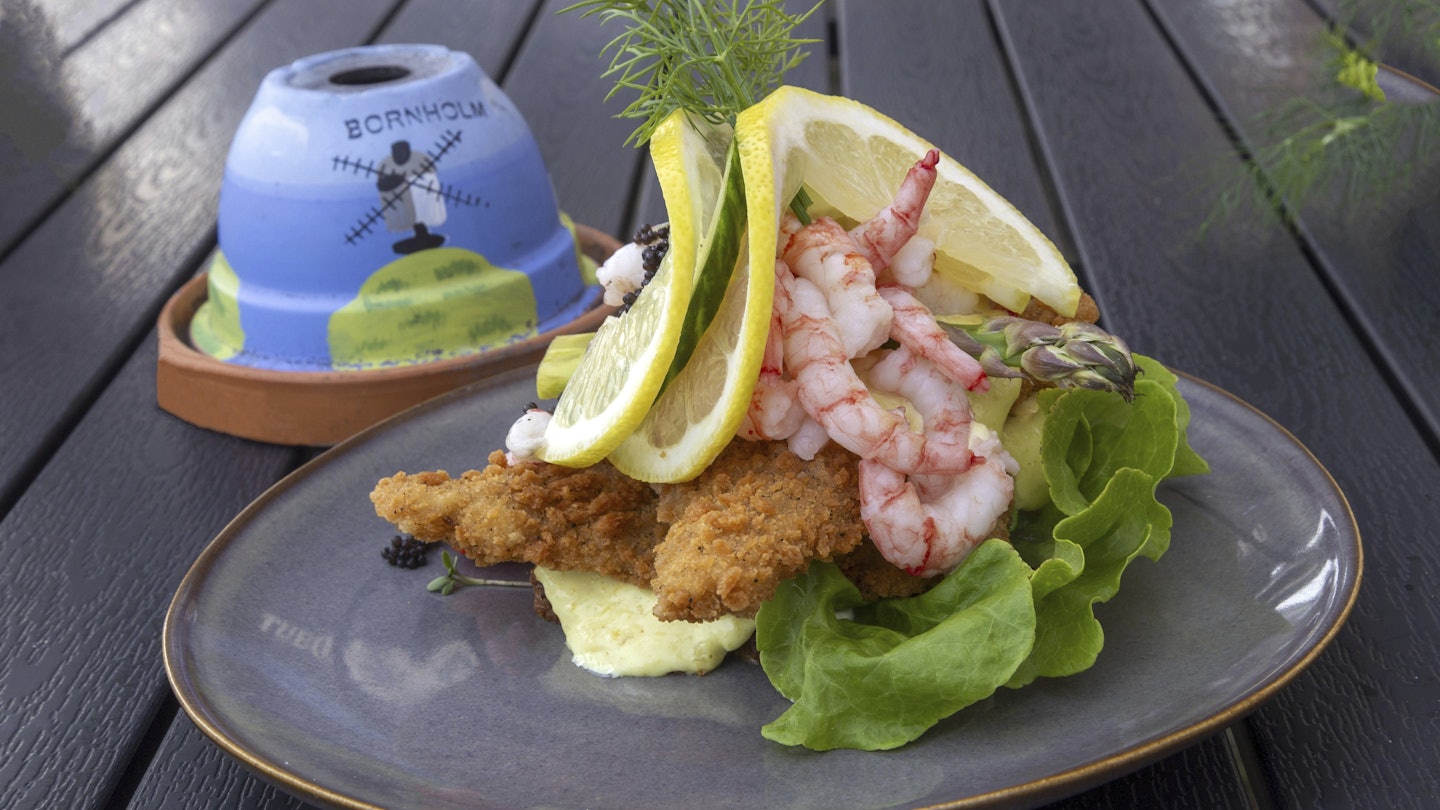
A Danish smørrebrød. imageBROKER/Stephan Gabriel
Scandinavia’s food scene crackles with energy and innovation, and most of what’s on offer has deep roots in local life.
The guiding culinary principles in Scandinavia combine the region’s dramatic landscapes and seasonal extremes of climate with the interplay between strong local traditions and Scandinavians’ relentlessly forward-looking approach to life. Stretching from the Baltic to the High Arctic, this epic land takes in rugged coastlines and the pristine lakes, rivers and pastures of the interior. Each bequeaths a wonderful contribution to the Scandinavian table.
Seasonality is a defining theme. In the short summer months, eating is often a celebration. Spring abundance, autumnal preparations for winter, and long, harsh winters: each period has its own culinary character. And then there’s New Nordic cuisine, which is built around the Scandinavian passion for the rich traditions of the past and the exciting possibilities of the future. The result is some of the most thrilling food in Europe.
Have we whetted your appetite yet? Here are 10 ways into the wonders of the region’s cuisine, and a roundup of the best things to eat and drink in Scandinavia.
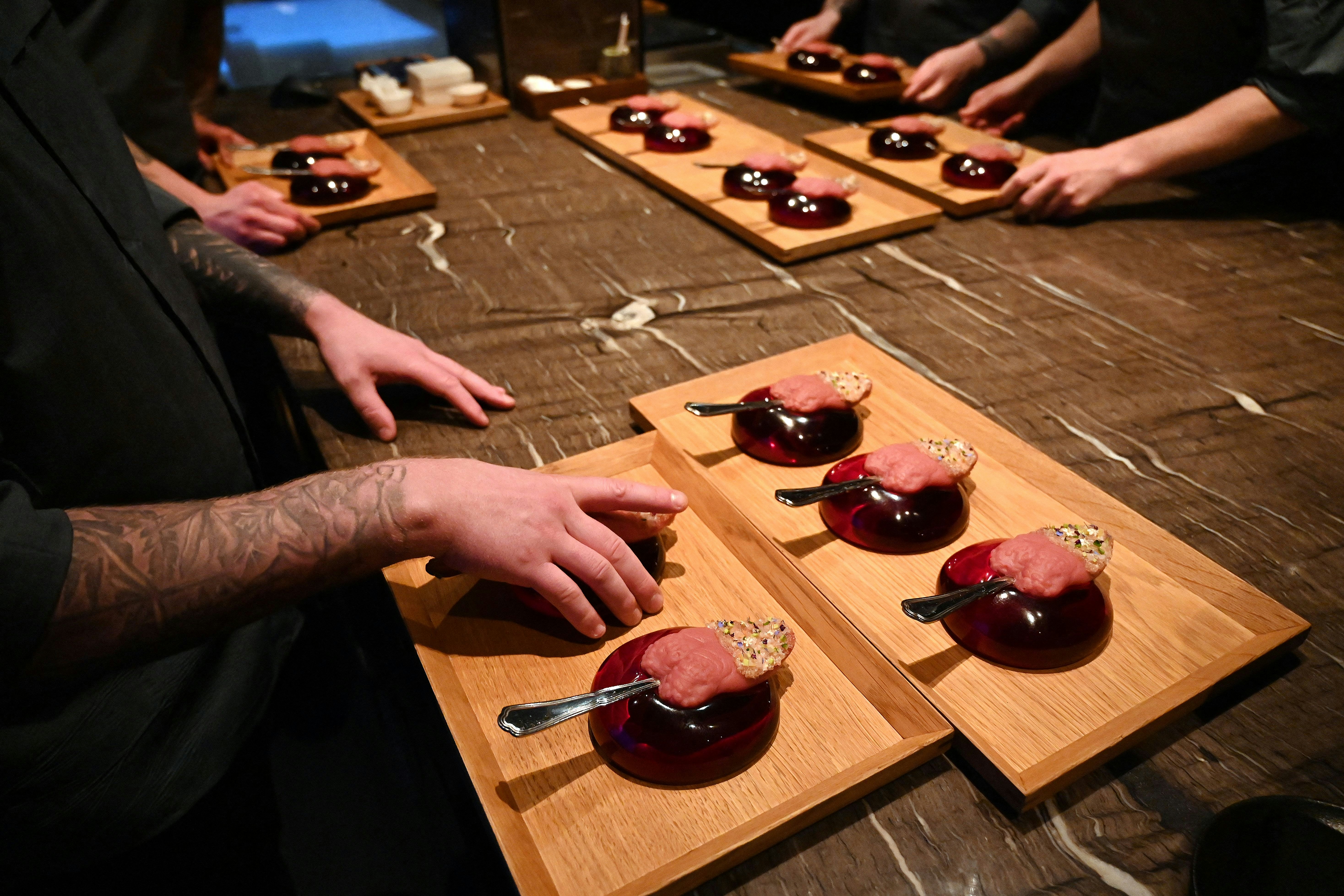
1. Taste why New Nordic cuisine has made the region so famous…
New Nordic cuisine appeared in 2004 with a 10-point manifesto – and no one has flown the movement’s flag higher than Copenhagen’s world-famous Noma restaurant and its owner-chef René Redzepi, renowned for playing with modest, often-overlooked ingredients and digging up long-lost food traditions. (Noma earned the title of best restaurant in the world on five occasions from 2010–21, before announcing that it was closing for good in 2024 and transforming into a food research lab. Its team is currently hosting occasional pop-up events; check the website if a meal here is still on your bucket list.)
At the heart of the New Nordic phenomenon are questions of sustainability, ethical production, seasonality, and a passion for foraging and local ingredients. Also important is a fidelity to local traditions even as chefs riff into previously uncharted territory. And it’s no longer restricted to Copenhagen: the dishes that emerge from New Nordic kitchens across Scandinavia continue to surprise.
Such epicurean experimentation doesn’t come cheap. Yet some of Scandinavia’s most unforgettable restaurants are temples to New Nordic cuisine, and splurging on a tasting menu at one (or three) can be your reward for economizing on hotel breakfast buffets and picnic lunches from the supermarket. Reserve ahead.
Where to try it: Dill in Reykjavík (Iceland’s first Michelin-star restaurant and a New Nordic pioneer); Iris in Rosendal (a floating orb by the Norwegian fjords reachable by boat, which promises six hours of “experiential dining”); Brimi-Fjellstugu in Tessand (the mountain-lodge cafe of Norwegian celebrity chef Arne Brimi).
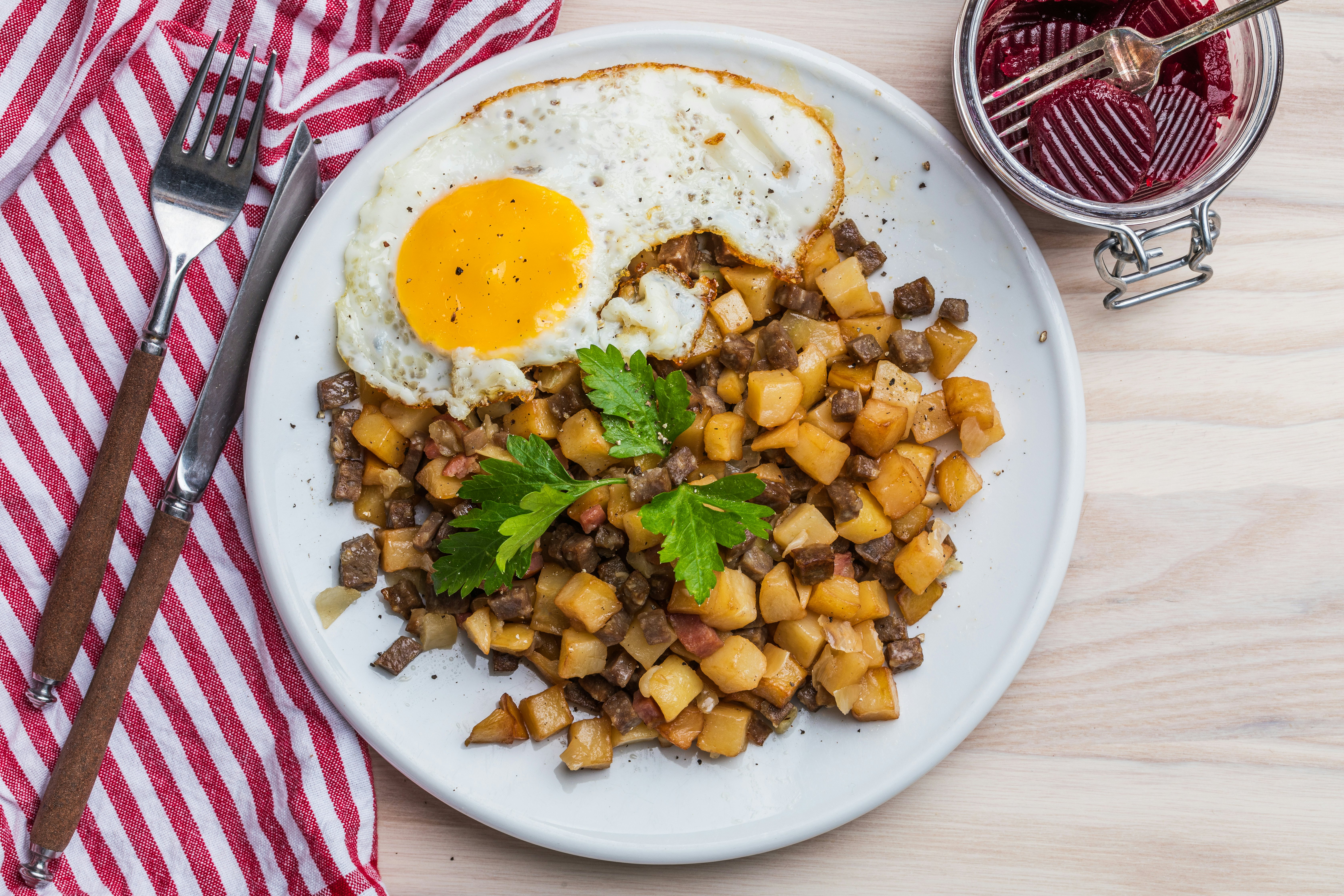
2. …then savor the joys of Scandinavian husmanskost (comfort food)
They call it husmanskost (basic home cooking) in Sweden, but every country has its own version of down-home comfort food. Traditional Scandinavian cuisine is often based on simple, everyday dishes – Swedish meatballs are perhaps the most widespread example; frikadeller (fried minced-pork meatballs commonly served with boiled potatoes and red cabbage) is a Danish variant on the theme.
Other classic home-cooked dishes are largely built around seafood and potatoes, and include various forms of pickled and fried herring, cured salmon, shrimp or roe. In Sweden, pytt i panna (potato hash served with sliced beets and a fried egg) may be the ultimate comfort food. And Finns have been known to come to blows over whose granny cooks the best grilled liver, traditionally served with mashed potatoes and bacon.
Not that long ago, finding such food in a restaurant was hard – for Scandinavians could, after all, enjoy such dishes at home. Thankfully, after all the excitement of the New Nordic movement, times are changing, and some restaurant chefs are returning Scandinavians to their roots. This is especially true in rural areas with a growing number of farm-to-table restaurants. Yet cities are also getting in on the act, too.
Where to try it: Pingvinen in Bergen.
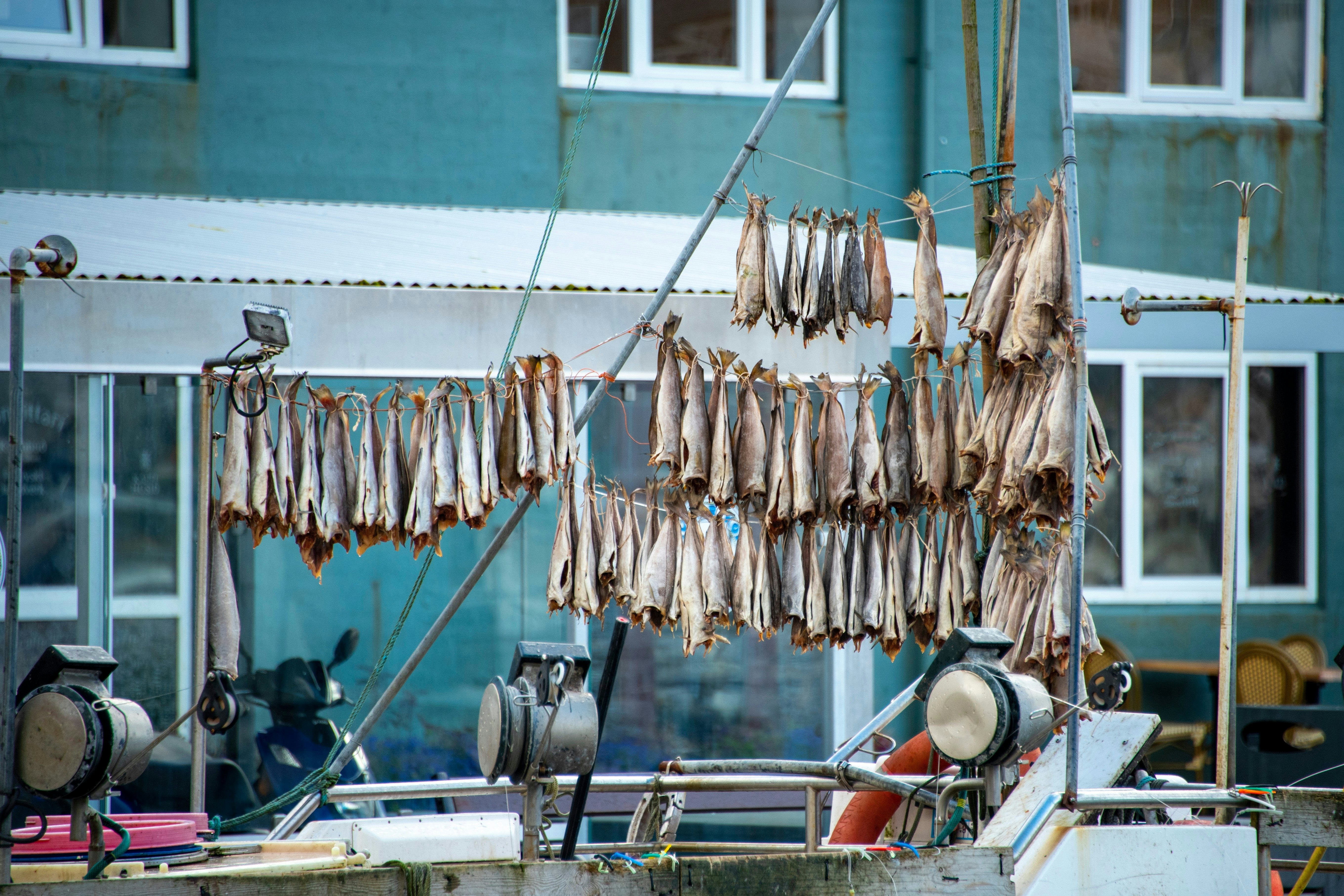
3. Bite into meat as you’ve never tried it with Faroese ræst
Buffeted by blustery North Atlantic winds, the Faroe Islands have been harnessing the forces of nature to help preserve food for centuries. The salty air and cool but consistent year-round temperatures are ideal for ræst, meaning “fermentation.” Still used today, this traditional wind-drying method involves meat and fish hung out in small, drafty huts called hjallur. In some villages, you might spot fish (and even black whale meat) hanging from rafters outside homes.
When meat reaches the ræstur stage, it’s edible without cooking. Ræst kjøt (fermented lamb) and ræst fiskur (fermented fish) are Faroese specialties. Well-aged (five to seven months), wind-dried mutton, called skerpikjøt, is a particular local favorite, and is dry-textured yet distinctly flavorsome, with a potent, musty edge.
Where to try it: Ræst and The Tarv, both in Tórshavn.
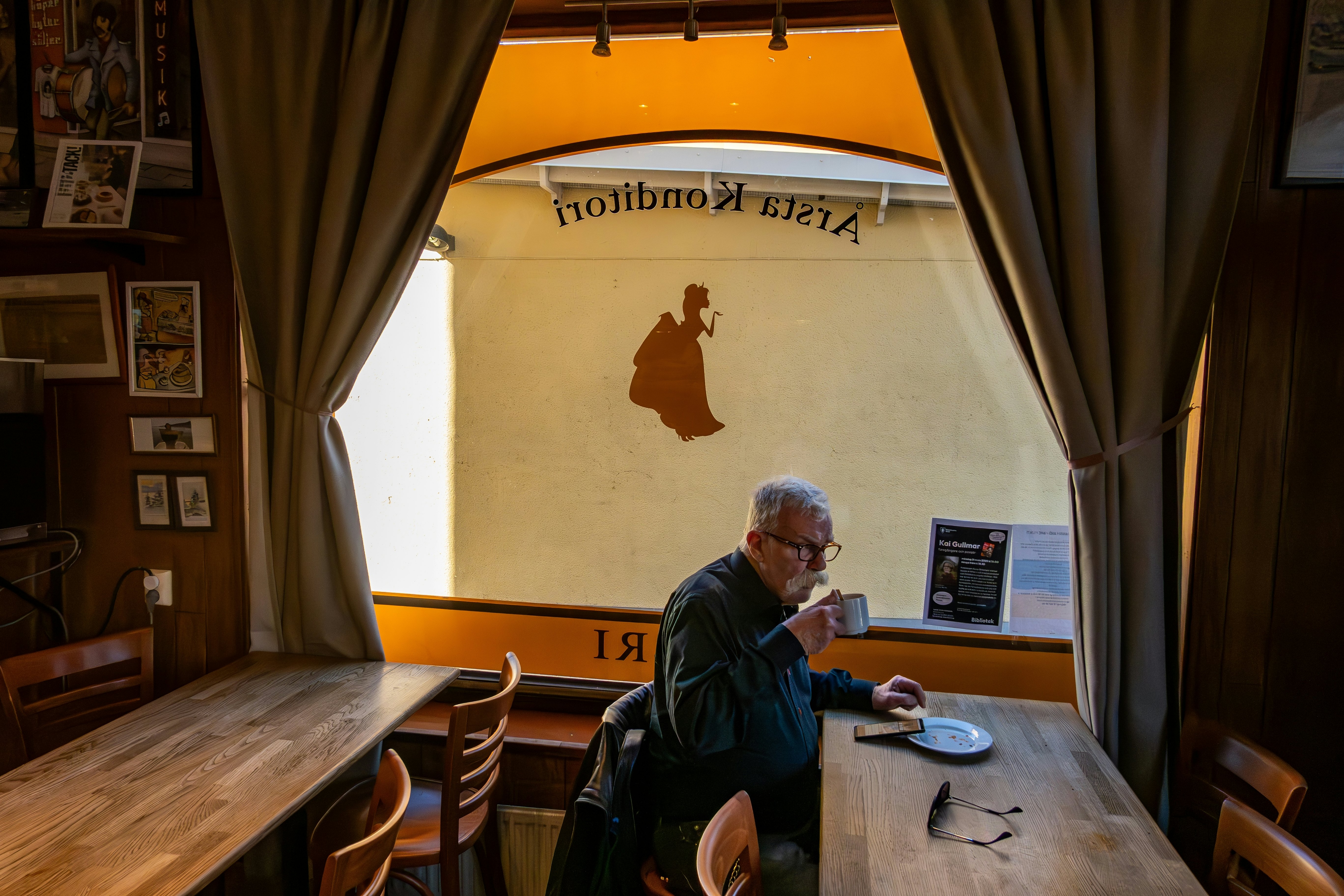
4. Arrange the perfect Swedish fika
A beloved ritual that’s been baked into Swedish culture for centuries, fika is a Swedish coffee break, often with something sweet on the side. The idea is that you should slow down and take a pause from your daily routine; accordingly, fika is compulsory in some workplaces. What constitutes a fika varies greatly – from a hot flask of coffee and homemade biscuit while hiking, to a flavored latte and fancy cake in a historic coffeehouse.
Increasingly, there are as many drinks of choice for fika as there are Swedes – but there remain some traditional mainstays. Bryggkaffe (black filter coffee) has always been Swedes’ staple hot caffeinated drink. Swedes use globally recognised Italian names for familiar coffee styles like latte and cappuccino – but flavored bryggkaffe variations are popular and called smaksatt; try kanel (cinnamon) and vanilj (vanilla). Fruit and black te (tea) can be a popular alternative to coffee. English Breakfast blends aren’t typically on offer.
Fika without a sweet of some kind is no fika at all. Most commonly, it will begin with kanelbulle, Sweden’s classic cinnamon bun, or kardemummabullem, a cardamom-flavored bun. You could also try princesstårta (sponge cake filled with cream and covered in a lime-green marzipan); chockladbulle (an unbaked chocolate ball made with rolled oats and often topped with coconut); or kladdkaka (Sweden’s version of chocolate mud cake, with a gooey middle).
Where to try it: Vete-Katten in Stockholm.
5. Enjoy Icelandic skyr in all its variations
Skyr is a rich, creamy dairy product that’s packaged like a yogurt but technically defined as a cheese, like ricotta or mascarpone. Icelanders have been eating it for centuries. Made from cow’s milk, it’s high in protein but low in fat and packed with calcium and B vitamins.
Skyr can be eaten for breakfast or as a snack, or used to make desserts like cheesecake, crème brûlée or an Icelandic twist on tiramisu. It can also form the base for drinks and smoothies, and there’s a type of runny skyr that’s essentially a milk.
Skyr is often eaten on the go with individual servings packaged with disposable spoons. Pick up a carton at a shop or visit a skyr bar for a bowl topped with fruit, nuts, peanut butter and more. You may opt for a skyr and oatmeal breakfast, as many Icelanders do.
Where to try it: Efstidalur II, a farm that makes skyr, feta and ice cream on-site, in Laugarvatn.
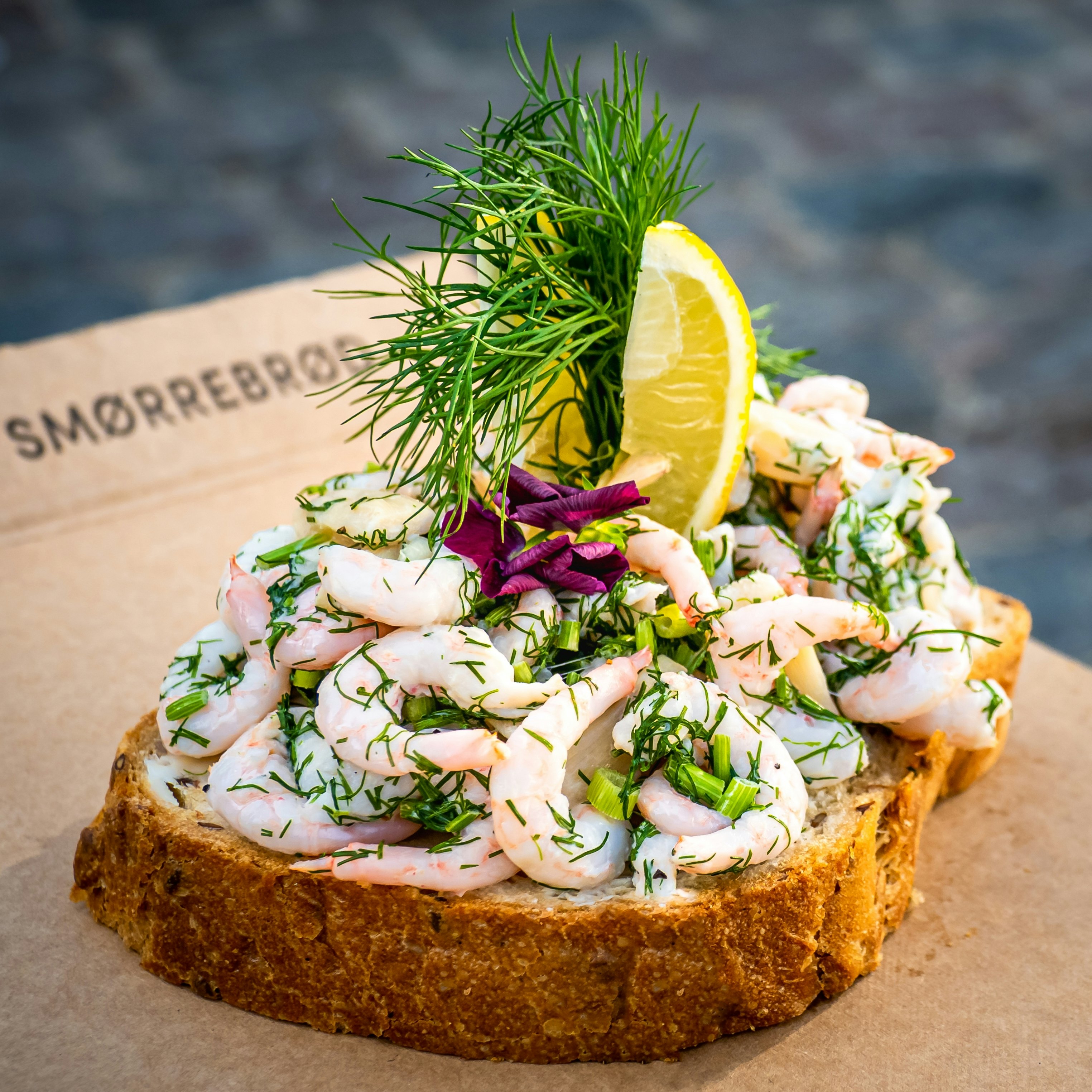
6. Discover the art of the smørrebrød in Denmark
Smørrebrød (pronounced “smuhr-bro”) is simply an open sandwich with one layer of bread. It has long been a lunchtime staple, with its earliest mention going back to medieval times in Denmark. At its most basic, it consists of sliced rye bread topped with shrimps, pickled herring, egg or leverpostej (liver pâté) plus garnish. But these days, the smørrebrød served in restaurants are nothing less than elaborate art forms.
Eating smørrebrød is almost a ritual, and Danes are very particular about it. There’s an unwritten law that governs the specific order, specific bread and the specific garnish that each serving must have. Smoked salmon goes with white bread, for example; herring, with rye bread.
Cheap smørrebrød are available in bakeries – or you can sit down for a multi-course smørrebrød extravaganza. Cafes usually offer individual pieces à la carte, or a choice of three servings at a set price.
Where to try it: Schønnemann in Copenhagen.

7. Take a table at the farm in an Icelandic greenhouse
It won’t take long for you to notice that the countryside in Iceland is dotted with greenhouses. These climate-controlled structures allow Icelandic farmers to grow cucumbers, strawberries, lettuces, peppers, mushrooms, herbs and flowers year-round in a place where weather extremes are the norm. To the delight of locavores, many of them have on-site restaurants. It doesn’t get any more farm-to-table than this.
Where to try it: Farmers Bistro in Flúðir for mushrooms; Friðheimar in Reykholt for tomatoes.
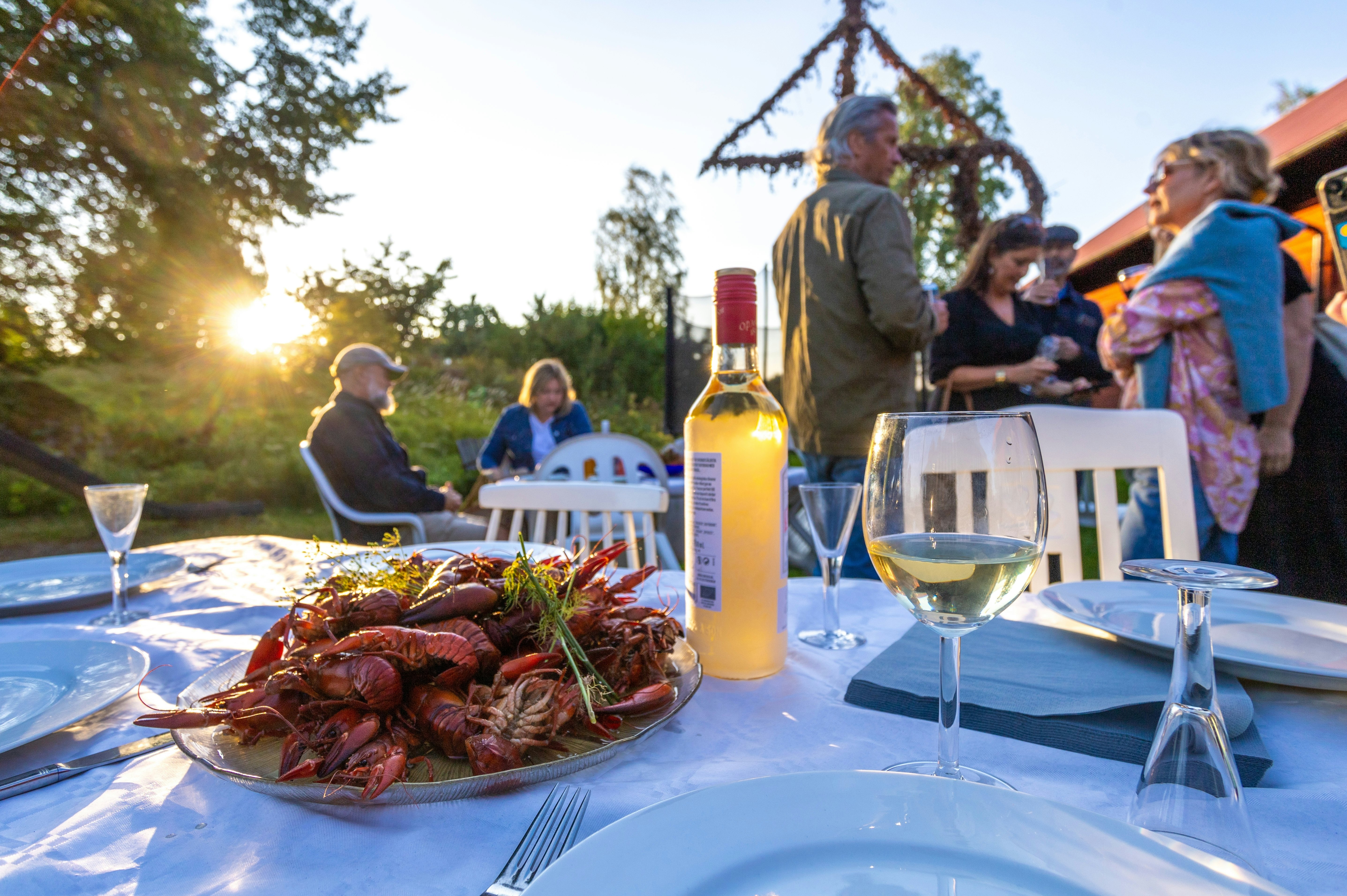
8. Sip genuine Swedish snaps
Snaps is the Swedish name for high-proof spirits that are typically consumed during seasonal events such as Midsummer’s Eve, summer crayfish parties, Christmas dinners or university celebrations. The most common type is brännvin, which is produced in a similar way to vodka: by distilling potatoes or cereal grains, then adding spices and herbs.
Swedes typically fill small thin glasses or shot glasses with snaps at the start of a meal. Then they down them whenever someone instigates a toast, and to round off drinking songs, which are commonplace during seasonal events. If you can’t stomach a whole glass at once, it’s acceptable to sip snaps during a meal.
Where to try it: Qvänum Mat & Malt brewery and distillery in Kvänum.
9. Seek out heimablídni in the Faroe Islands
Eating in a local home is one of the most intimate ways to learn about the Faroese way of life, and to taste authentic food that's rarely offered at restaurants. Heimablídni means “home hospitality” – and it’s an experience offered on many of the Faroe Islands. Meals range from simple lunches with soup and cake, to gourmet dinner party–style supper clubs. Usually, fish or lamb is on the menu, and you might get to try a little ræst (the uniquely Faroese style of fermentation, most often used for lamb and fish).
Heimablídni is not a cheap dining option, and you’ll need to reserve ahead so the hosts have time to prepare. Often, a minimum of two to four people is required.
Where to try it: Check eatlocal.fo, which has the most extensive list of home-dining experiences available to book.
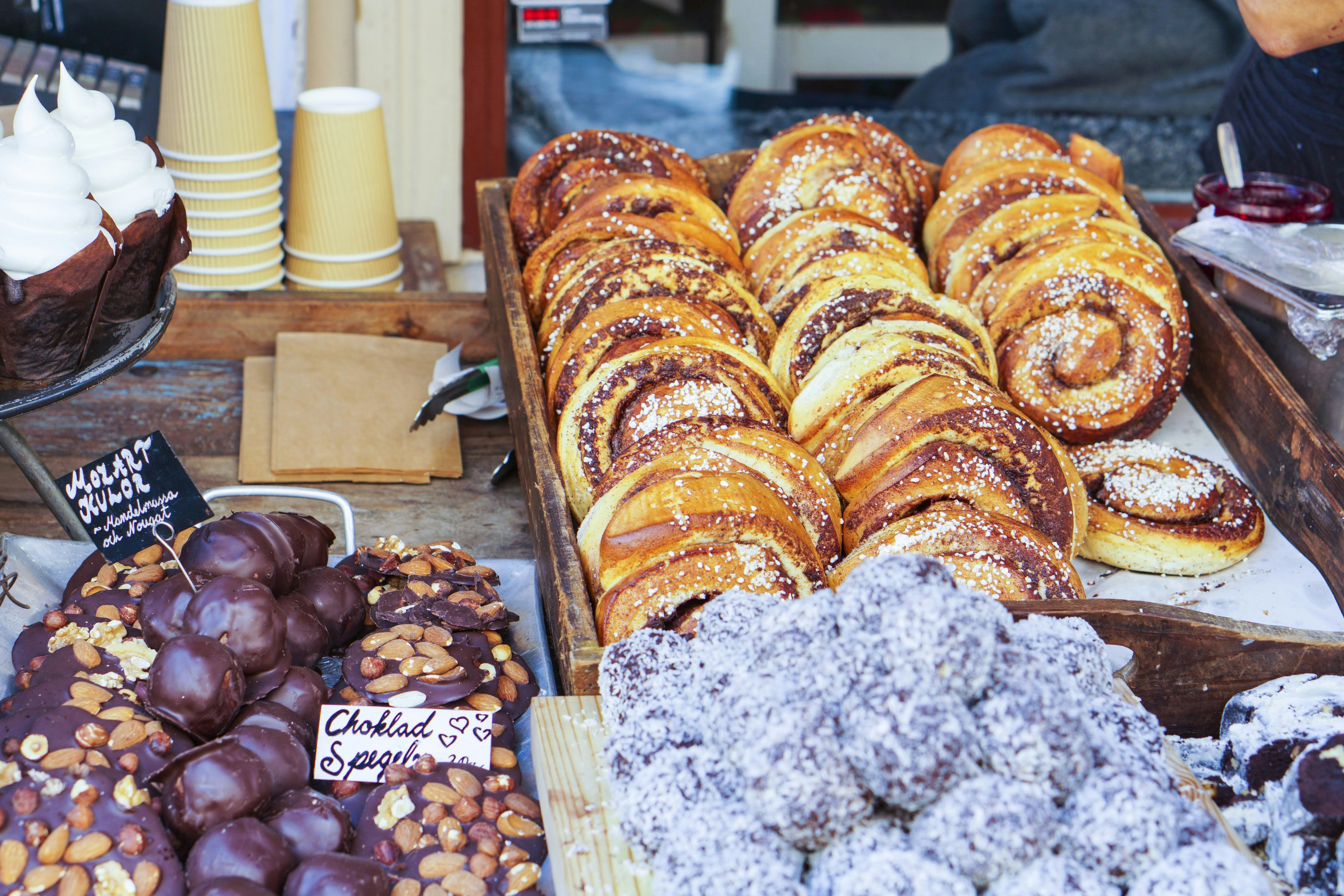
More Scandinavian foods worth trying
Cinnamon rolls: Kanelsnegle to the Danes, kanelbullar or kanelsnurrer to the Swedes.
Fiskesuppe: Creamy, fish-flavoured soup with fish or seafood pieces; Finns do a salmon version.
Flatbraud or flatkökur: Icelandic flatbread, often topped with smoked lamb, salmon or trout.
Gravat laks: Norwegian salmon marinated in sugar, salt, brandy and dill.
Gudbrandsdalsost: Caramel-sweet Norwegian brown cheese.
Hákarl: Fermented shark (often served in Iceland with a shot of Brennivin).
Harðfiskur: Icelandic dried fish, eaten with butter; nutritious and lightweight for hikes and long voyages.
Herring (sild or sill): Served salted, dried, sugar-cured and in many other ways.
Hjortron: Cloudberry; served in Sweden as jam or as a warm sauce over ice cream; Finland’s Ranua even has a cloudberry festival in August.
Hrútspungar: Sour ram testicles in gelatin or whey eaten in Iceland as a pâté.
Icelandic lamb: Roasted free-range lamb fed on chemical-free grasses and herbs.
Karhu: Bear; available in Finland during autumn’s hunting season.
Kaviar in a tube: Sugar-cured and smoked cod-roe cream popular on breakfast tables.
Köttbullar och potatis: Swedish meatballs and potatoes with lingonberry jam.
Lutefisk: Norwegian stockfish rehydrated in a lye solution, giving it a gelatinous texture.
Nässelsoppa: Nettle soup, traditionally served with hard-boiled eggs in Sweden.
Pølse: Hot dog; the Scandinavian equivalent of a kebab; served with mustard, ketchup, crispy onions and pickles.
Sautéed reindeer: Sámi dish: potatoes, lingonberries, pickled cucumber.
Stegt flæsk med persillesauce: Denmark’s national dish: fried pork belly, crackling, potatoes, parsley sauce.
Svartfugl: Commonly translated as “blackbird” on Iceland’s English-language menus; usually guillemot.
Toast Skagen: Shrimps on toast, named after a Danish port but adored everywhere.
Tørrfisk: Dried, unsalted Arctic cod served as a main meal or snack in Norway.
Torsketunger: Cod tongues; popular in Norway’s Lofoten Islands.
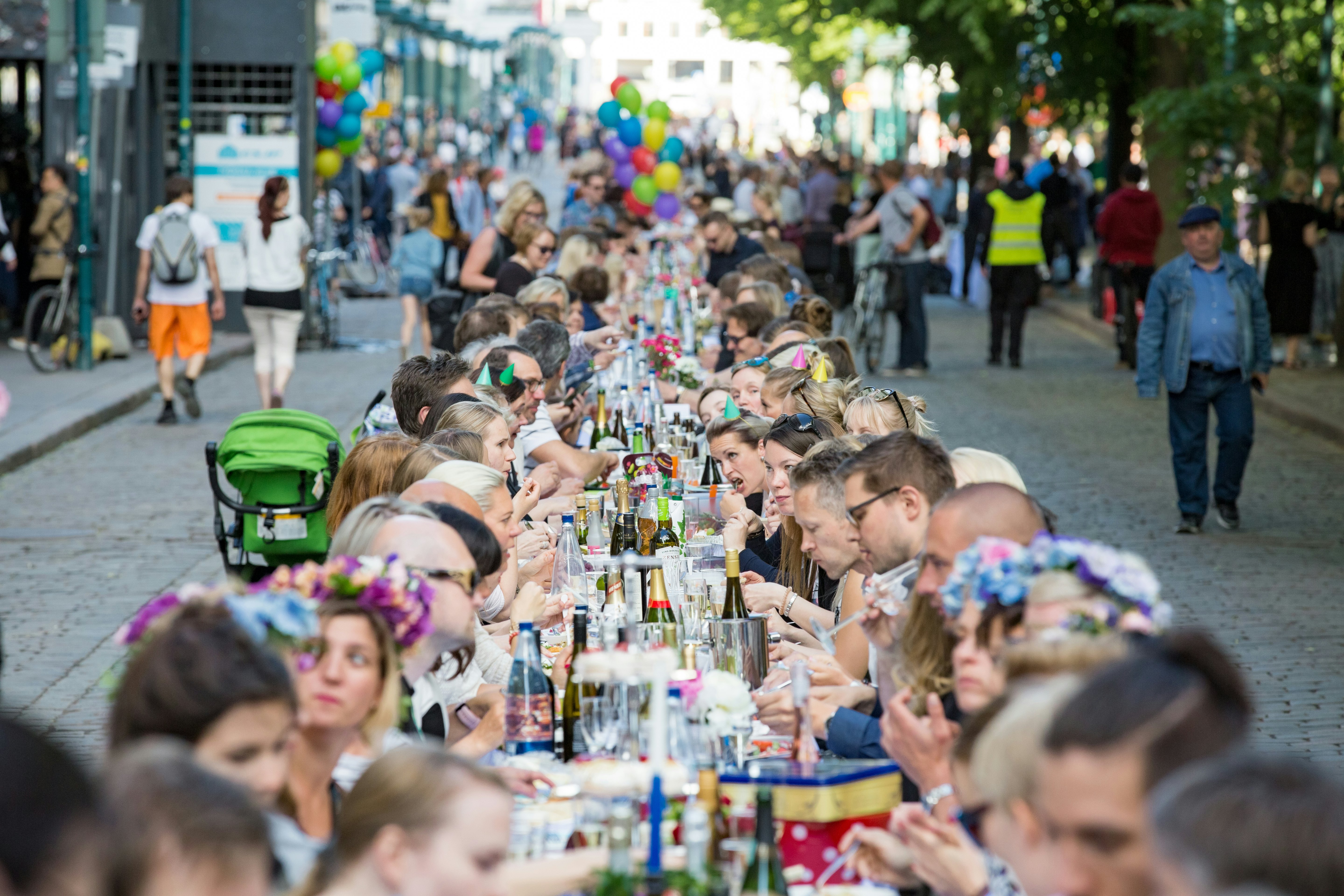
A Scandinavian year in food
Spring (March–May)
Festivals and warming temperatures involve celebratory meals (such as Easter lamb). New potatoes, asparagus and other vegetables appear on menus. It’s donut season in Finland; in Sweden, you can try nettle soup.
Summer (June–August)
No one knows how to welcome summer’s return quite like Scandinavians; now’s the time for outdoor dining, harbor-side fish markets, forest foraging and berries on the menu in everything.
Autumn (September–November)
Scandinavians head to forests to pick the last berries and mushrooms. Seasonal menus shift from fresh, summery tastes to hearty, warming stews. In Iceland, roasted heiðagæs (pink-footed goose) is popular.
Winter (December–February)
Reindeer stew, roast lamb, salted meat and fish (especially cod) are enjoyed region-wide. Christmas markets are popular; try mulled wine (glögi in Finnish). Christmas brings ptarmigan (grouse) and pheasant to the table.
This article was adapted from Lonely Planet’s Scandinavia guidebook, published in July 2025.






